As a teenager, Ignacio Urquiza traveled with his father, a photographer, as he captured images of the houses, food, and culture of Mexico’s Pacific coast. Often, “the houses were just pergolas and terraces,” he remembers. In a place that’s always hot, with little rain six months of the year, minimal enclosure was the best strategy. The Mexico City–based architect kept that in mind when he designed Casa en El Torón on a particularly beautiful—and rugged—private reserve of the same name in the state of Oaxaca, overlooking Playa Ventanilla. “The site is magnificent,” says Urquiza. “Everything we did was driven by respect for it.”
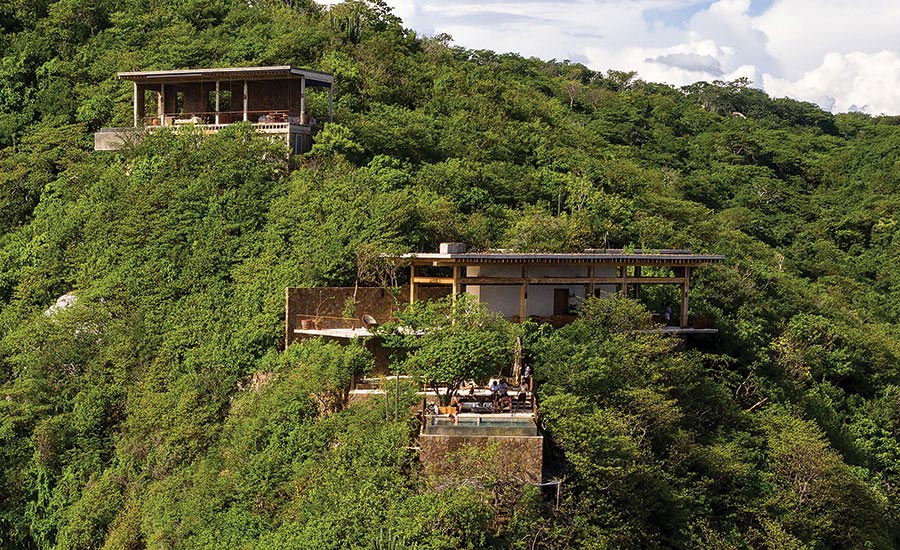
Photo © Onnis Luque, click to enlarge.
The clients, a couple with two young children, also from Mexico City, had asked Urquiza to develop a master plan for the 25-acre reserve. For about a year, Urquiza visited the site repeatedly with the clients. They considered a range of options, but eventually pared down the plan to just a few houses—the first one, Casa en El Torón, would be a vacation home for the clients to use once a month and rent out the rest of the time. A second house, also designed by Urquiza, is under construction. To fit in with the steep topography and break down the scale, Urquiza designed Casa en El Torón as a trio of pavilions climbing the rough terrain. The main one, at 4,520 square feet, has a bedroom and a studio on a lower level, and living, dining, and kitchen spaces above. A nearby second module of 1,615 square feet—all on one floor—offers sleeping accommodations for four people and a small, partially covered, patio. Farther away is a 3,015-square-foot structure with a pair of bedrooms, as well as its own living, dining, and kitchen areas, so it can function as the clients’ secondary retreat when the other pavilions are rented.
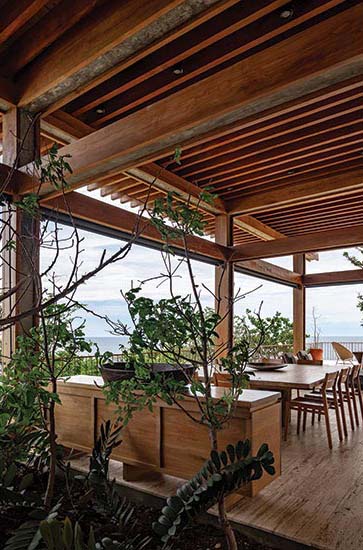
1
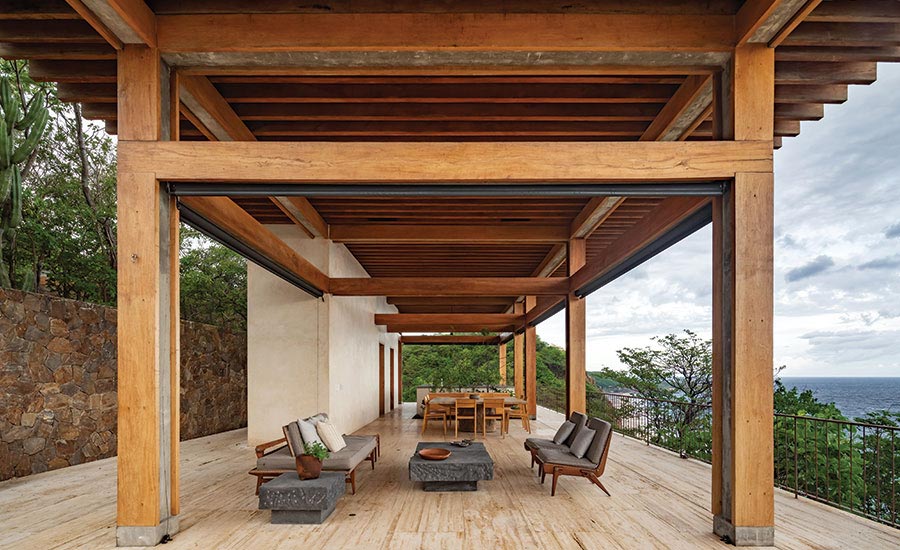
2
Columns and beams in the main pavilion are made of an 8-by-8-inch concrete core sandwiched between wood planks (1 & 2). Photos © Onnis Luque
“I saw the house as a series of terraces,” says Urquiza, emphasizing the importance of outdoor spaces. Rather than just hugging the ground, though, those spaces sit on the upper level of the two larger dwellings, so they can offer views in all directions and catch breezes coming off the coast. Living, dining, and cooking—uninterrupted by interior partitions—take place in the open air, seemingly floating above the land. A simple framed structure of concrete-and-wood columns and beams, topped by a reinforced-concrete slab roof, is all that defines this free-flowing space in each building. Instead of enclosing walls, perforated PVC curtains can roll down from perimeter beams to provide protection from sun and rain, when needed. The only solid walls are those that enclose a bathroom and pantry pushed to the uphill side of the main module.
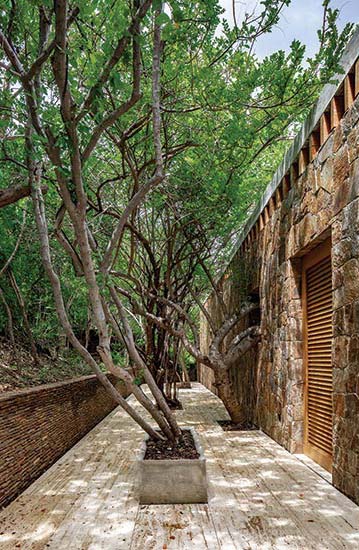
A nearby structure with sleeping quarters for guests and children is kept cool by stone walls. Photo © Onnis Luque
Sleeping quarters—whether on the lower floors of the large units or in the single-level small one—have a strikingly different character. Wrapped in walls made of carefully chosen local stone, the bedrooms are rooted in the ground, protected and dark instead of open and bright. Adjustable wood louvers bring in, or shut out, daylight and air, eliminating the need for any glass in the house. Small openings between wood roof beams also contribute to natural ventilation. Although the bedrooms have air-conditioning to satisfy the demands of renters, Urquiza says it is very rarely needed.
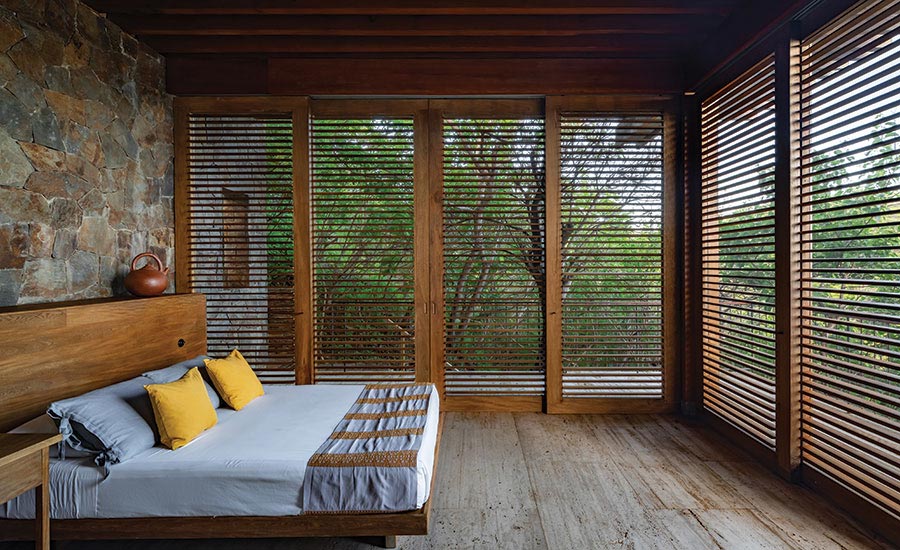
3
No glass was used in the entire house. Instead, bedrooms have openings protected by adjustable wood louvers (3), as seen in the smallest pavilion. A private patio (4) offers a partially protected retreat off one of its two sleeping quarters. Photos © Onnis Luque
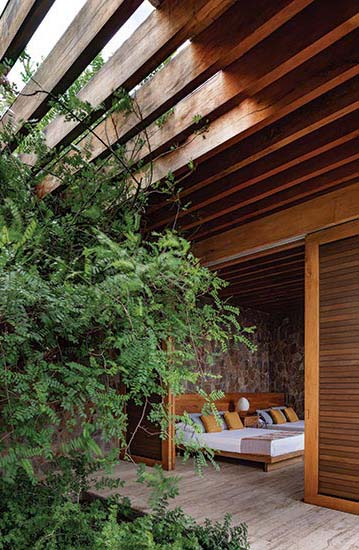
4
Minimizing the impact on the environment was a major concern, says Urquiza, and affected almost all decisions. No cars are allowed in the preserve, so parking is restricted to an area at the edge of the property, about two-thirds of a mile from the house. Golf carts and motorcycles transported all construction materials to the building site, and no heavy equipment was employed. Urquiza specified local materials—such as a tropical wood for columns, beams, and louvers, and the brownish granite from the site itself for walls. Craftsmen from Oaxaca assembled large, irregular pieces of the granite to form the structural walls enclosing sleeping areas and stacked horizontal strips of it to make low retaining walls. The cream-colored stone used for all of the terraces and paving is a travertine brought in from Veracruz, the state just to the north of Oaxaca. The texture of the travertine prevents slipping when wet and its light color makes it easy to see snakes and scorpions, if they should wander in.
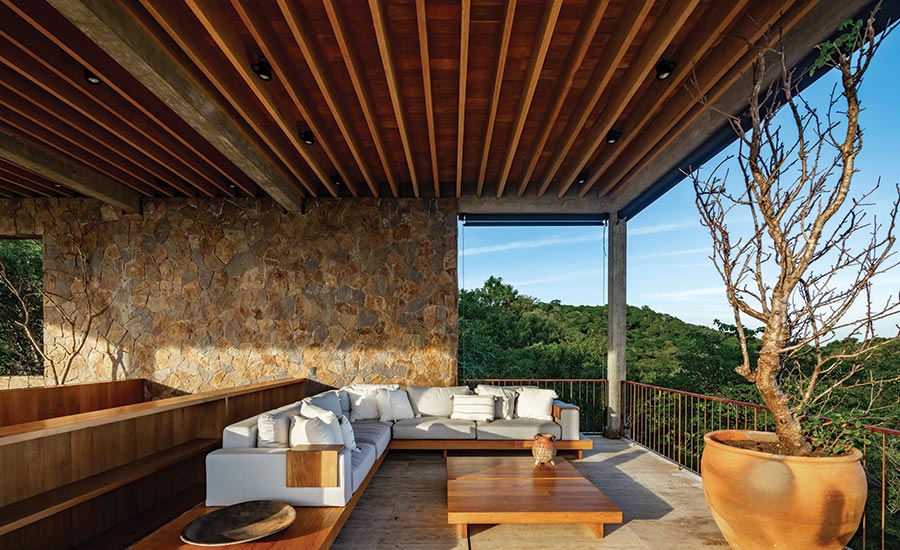
The medium-size pavilion can act as an independent unit when the other two are rented. Ana Paula De Alba designed all interiors and furniture in the house. Photo © Onnis Luque
Like Oaxacan cooks who take their time preparing local moles, Urquiza and his clients didn’t rush the process of creating Casa en El Torón. After designing each of the pavilions in his office, the architect came to the site to stake out the three footprints, adjust them to capture the best views, and figure out the patios and outdoor spaces between the buildings. He took advantage of the steep terrain to fragment the architecture and give each piece of the house its own sense of place, as defined by outdoor stairs, retaining walls, and landscaping. As a result, he established an intriguing dichotomy of the particular at ground level and the more ambiguous above, where you’re not quite sure if you’re indoors or out. In the house’s bedrooms and the outdoor spaces around them, you feel connected to the specific, while in the social areas above you can lose yourself in the sky, the sea, and the horizon.
Click drawings to enlarge
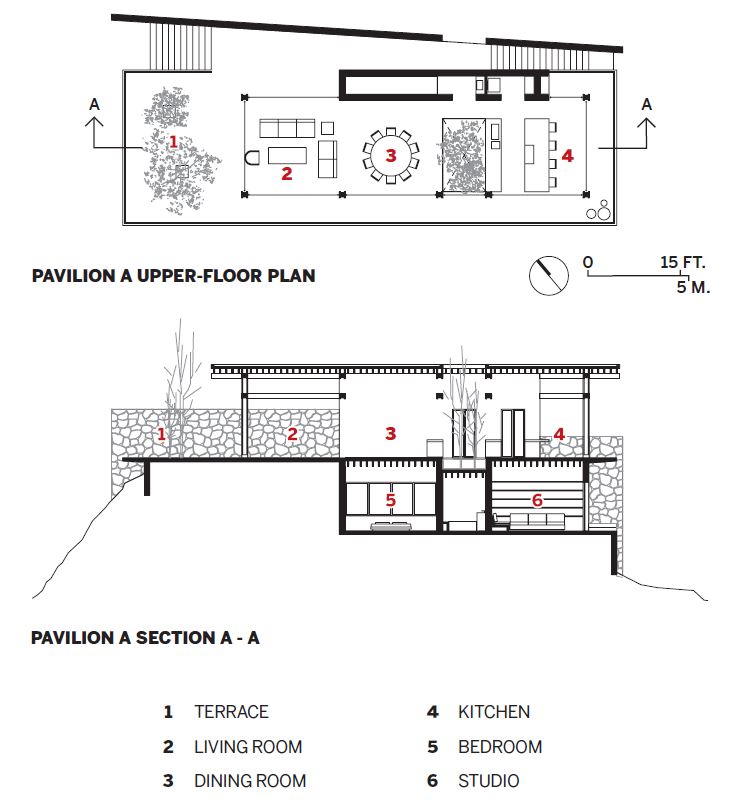
Click drawings to enlarge
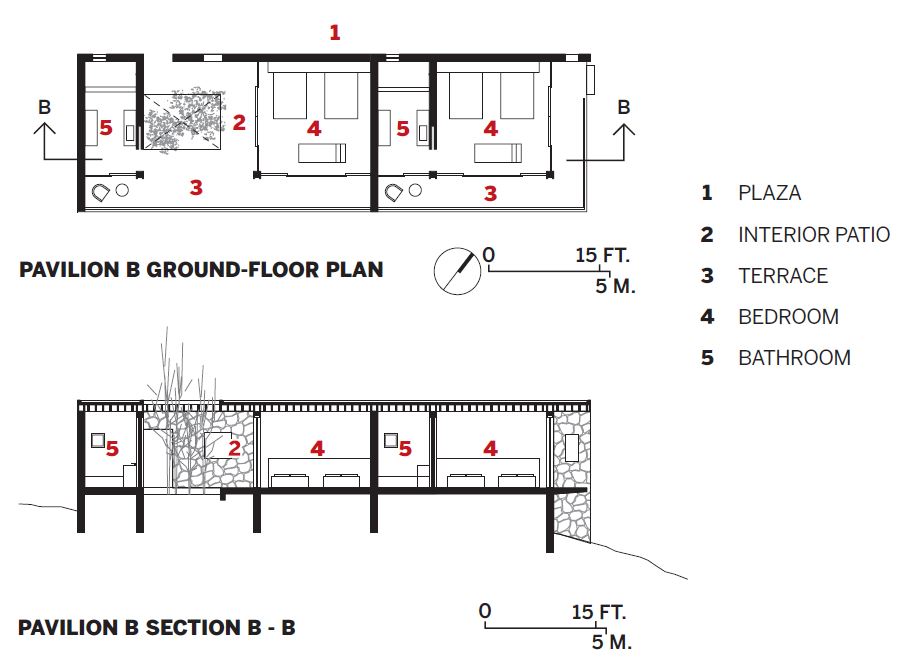
Credits
Architect:
IUA Ignacio Urquiza Arquitectos — Ignacio Urquiza Seoane, design lead; Michela Lostia di Santa Sofía, project manager; Anaís Casas Giaccardi, Paulina Buenrostro, María del Mar Carballo, design team
Engineer:
Ricardo Camacho (structural)
Interior Designer:
APDA — Ana Paula De Alba, design lead; Sacha Bourgarel, design team
General Contractor: Alonso García Cano & Santiago Gaxiola
Consultant:
Alejandro Lirusso,
lifeflow group (bio-technical)
Client:
Withheld
Size:
9,150 square feet
Completion Date:
June 2020
Sources
Furniture:
APDA (custom)
Wood Doors and Windows:
Alonso García Cano & Santiago Gaxiola (fabricated on-site)





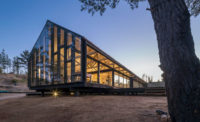
Post a comment to this article
Report Abusive Comment